Dacia Duster Estate (2013-2018) engines, drive and performance
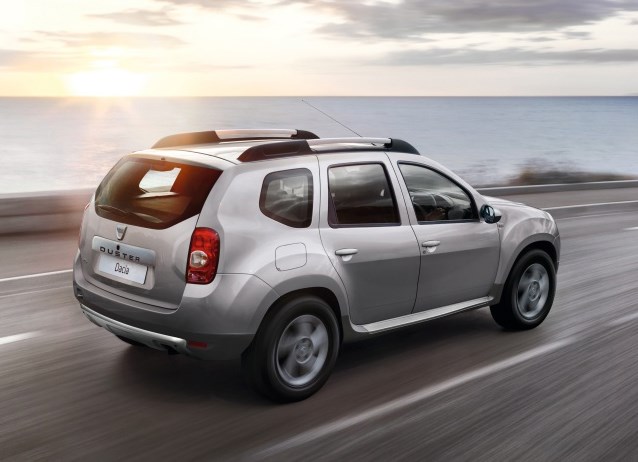
- Two petrol engines, one diesel
- Choice of manual or auto, depending on spec
- Four-wheel drive option available
Petrol engines
There are two petrol engines to choose from. The entry-point to the range was a 115hp 1.6-litre petrol unit – and we thought it was adequate for the Duster’s size and weight. It even pulls well in fifth gear and, if you beat it like it owes you money, it’ll get from zero to 62mph in 11.0 seconds. You’ll need to change down a gear or two and keep the revs high when overtaking, but its 156Nm of torque should be enough for most situations.
The turbocharged 1.2-litre TCe 125 engine has 10hp more than the SCe 115 and a useful 205Nm of torque. It’ll also go from 0–62mph in 10.4 seconds, so it’s the one to go for if you want the most performance out of the Duster.
Diesel engine
The 1.5-litre dCi diesel is a tried-and-tested engine found elsewhere in the Renault range, as well as various Nissan models. Its 110hp and 260Nm of torque help get it to 62mph in 11.8 seconds from a standstill, although the 4x4 version is slightly slower at 12.4 seconds.
Gearboxes
The SCe 115 comes with a five-speed manual gearbox only, while the TCe 125 and dCi 110 come with six-speed ‘boxes. The sole automatic – a six-speed dual-clutch gearbox called EDC – is only available on the two-wheel drive diesel, and it’s a smooth and economical combination.
What’s it like to drive?
Well, the Dacia Duster is never going to attract enthusiastic drivers – it’s not a car for those that enjoy B-road blasts of an evening. If you need four-wheel drive and want a car that will make you smile, then you should buy a Mk1 MINI Countryman (although you’ll pay more for the privilege).
Tip the Duster hard into a corner and it’ll roll about like a badly set trifle. The driving experience is further hampered by its slow and vague steering – although there’s a lot to be said for its manual gearbox. It feels slightly agricultural and changes with a slightly crashy action. It’s rather fun.
.jpg)
On the up side, the ride is comfortable. The Duster soaks up most bumps meaning rear seat passengers should give the Dacia the thumbs up. Plus, because its underpinnings are so tough and agricultural (and it’s available with the option of four-wheel drive), you can take it off-road and keep up with much larger off-roaders. At least to a point.
Serious rock crawling or mud plugging will quickly find the little Duster’s limits. You don’t have locking differentials or a low-range transfer case like a Land Rover Defender, so you’ll find it harder to pull yourself out of trouble if you get stuck. But the Duster can tackle a slippery field or a gravel trail no problem at all.


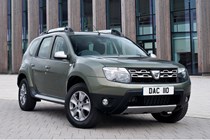
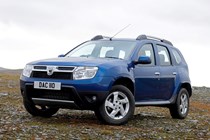
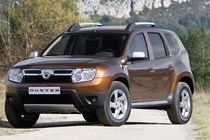
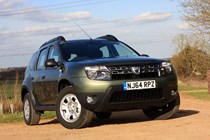
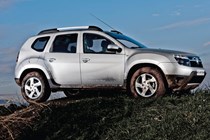
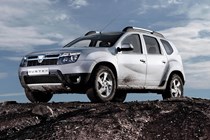

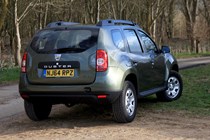
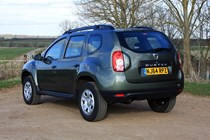

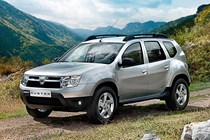
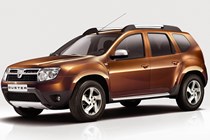
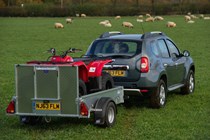

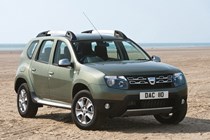
.jpg)
.jpg)
.jpg)
.jpg)
.jpg)
.jpg)
.jpg)
.jpg)
.jpg)
.jpg)
.jpg)
.jpg)
.jpg)
.jpg)
.jpg)
.jpg)
.jpg)
.jpg)
.jpg)
.jpg)
.jpg)
.jpg)
.jpg)


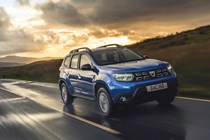
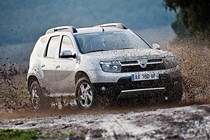
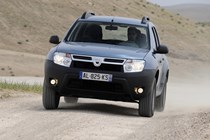
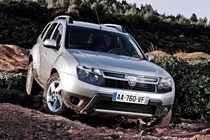
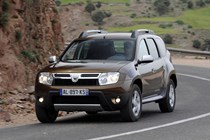
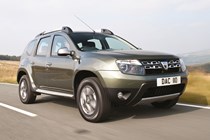
.jpg)
.jpg)
.jpg)
.jpg)
.jpg)

.jpg)
.jpg)
.jpg)
.jpg)
.jpg)
.jpg)
.jpg)
.jpg)
.jpg)
.jpg)
.jpg)
.jpg)
.jpg)
.jpg)
.jpg)
.jpg)
.jpg)
.jpg)
.jpg)
.jpg)
.jpg)
.jpg)
.jpg)
.jpg)
.jpg)
.jpg)
.jpg)
.jpg)
.jpg)
.jpg)
.jpg)
.jpg)
.jpg)
.jpg)
.jpg)
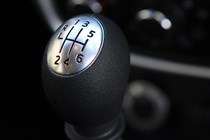

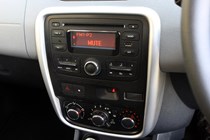
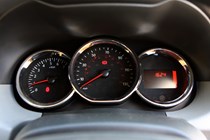
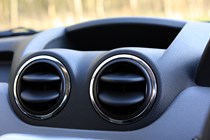
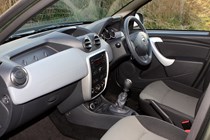
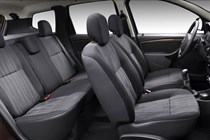
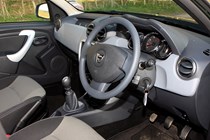
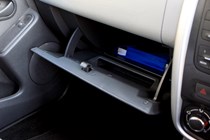
.jpg)
.jpg)
.jpg)
.jpg)
.jpg)
.jpg)
.jpg)
.jpg)
.jpg)
.jpg)
.jpg)
.jpg)
.jpg)
.jpg)
.jpg)
.jpg)
.jpg)
.jpg)
.jpg)
.jpg)
.jpg)
.jpg)
.jpg)
.jpg)
.jpg)
.jpg)
.jpg)
.jpg)
.jpg)
.jpg)
.jpg)
.jpg)
.jpg)
.jpg)
.jpg)
.jpg)
.jpg)
.jpg)
.jpg)
.jpg)
.jpg)
.jpg)
.jpg)
.jpg)
.jpg)
.jpg)
.jpg)
.jpg)
.jpg)
.jpg)

.jpg)
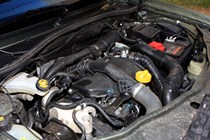
.jpg)
.jpg)
.jpg)
.jpg)
.jpg)
.jpg)
.jpg)















.jpg?quality=50)
.jpg?quality=50)
.jpg?quality=50)
.jpg?quality=50)
.jpg?quality=50)
.jpg?quality=50)
.jpg?quality=50)
.jpg?quality=50)
.jpg?quality=50)
.jpg?quality=50)
.jpg?quality=50)
.jpg?quality=50)
.jpg?quality=50)
.jpg?quality=50)
.jpg?quality=50)
.jpg?quality=50)
.jpg?quality=50)
.jpg?quality=50)
.jpg?quality=50)
.jpg?quality=50)
.jpg?quality=50)
.jpg?quality=50)
.jpg?quality=50)








.jpg?quality=50)
.jpg?quality=50)
.jpg?quality=50)
.jpg?quality=50)
.jpg?quality=50)

.jpg?quality=50)
.jpg?quality=50)
.jpg?quality=50)
.jpg?quality=50)
.jpg?quality=50)
.jpg?quality=50)
.jpg?quality=50)
.jpg?quality=50)
.jpg?quality=50)
.jpg?quality=50)
.jpg?quality=50)
.jpg?quality=50)
.jpg?quality=50)
.jpg?quality=50)
.jpg?quality=50)
.jpg?quality=50)
.jpg?quality=50)
.jpg?quality=50)
.jpg?quality=50)
.jpg?quality=50)
.jpg?quality=50)
.jpg?quality=50)
.jpg?quality=50)
.jpg?quality=50)
.jpg?quality=50)
.jpg?quality=50)
.jpg?quality=50)
.jpg?quality=50)
.jpg?quality=50)
.jpg?quality=50)
.jpg?quality=50)
.jpg?quality=50)
.jpg?quality=50)
.jpg?quality=50)
.jpg?quality=50)









.jpg?quality=50)
.jpg?quality=50)
.jpg?quality=50)
.jpg?quality=50)
.jpg?quality=50)
.jpg?quality=50)
.jpg?quality=50)
.jpg?quality=50)
.jpg?quality=50)
.jpg?quality=50)
.jpg?quality=50)
.jpg?quality=50)
.jpg?quality=50)
.jpg?quality=50)
.jpg?quality=50)
.jpg?quality=50)
.jpg?quality=50)
.jpg?quality=50)
.jpg?quality=50)
.jpg?quality=50)
.jpg?quality=50)
.jpg?quality=50)
.jpg?quality=50)
.jpg?quality=50)
.jpg?quality=50)
.jpg?quality=50)
.jpg?quality=50)
.jpg?quality=50)
.jpg?quality=50)
.jpg?quality=50)
.jpg?quality=50)
.jpg?quality=50)
.jpg?quality=50)
.jpg?quality=50)
.jpg?quality=50)
.jpg?quality=50)
.jpg?quality=50)
.jpg?quality=50)
.jpg?quality=50)
.jpg?quality=50)
.jpg?quality=50)
.jpg?quality=50)
.jpg?quality=50)
.jpg?quality=50)
.jpg?quality=50)
.jpg?quality=50)
.jpg?quality=50)
.jpg?quality=50)
.jpg?quality=50)
.jpg?quality=50)

.jpg?quality=50)

.jpg?quality=50)
.jpg?quality=50)
.jpg?quality=50)
.jpg?quality=50)
.jpg?quality=50)
.jpg?quality=50)
.jpg?quality=50)